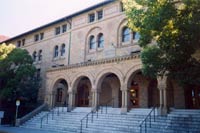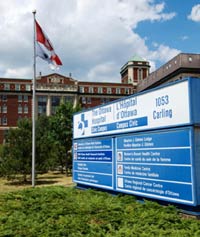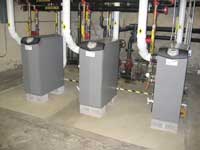view all Case Studies
Michigan's Artfully Green: GRAM Earns LEED Gold
Spurred by a $20 million donation from Peter Wege, a Grand Rapids, Mich., philanthropist and environmentalist, the new 125,000-square-foot Grand Rapids Art Museum (
GRAM) is the world’s first LEED Gold-certified art museum. The total cost of the building, which opened October 2007, was $75 million.
July 7, 2008 -
Green
Spurred by a $20 million donation from Peter Wege, a Grand Rapids, Mich., philanthropist and environmentalist, the new 125,000-square-foot Grand Rapids Art Museum (GRAM) is the world’s first LEED Gold-certified art museum. The total cost of the building, which opened October 2007, was $75 million.
Meeting the energy requirements for LEED certification were particularly challenging because of the building’s exacting standards for humidity and temperature. The team discussed several options, including an underground heat sink labyrinth system for pre-tempering outside air. Ultimately the team decided on a displacement ventilation system. In the lobby and galleries, air is discharged at low velocities from the floor so the supply air does not need to be as cool as with other HVAC systems. Most cooling occurs just above the floor.
Evaporative cooling lowers the temperature of the outdoor air to make it more effective for use as condenser air, removing the heat from the refrigerant cooling cycle and eliminating the need for a rooftop cooling tower. Energy recovery wheels preheat and precool outside air.
As energy-efficient as the system is, it also meets the art museum’s stringent indoor air quality standards: relative humidity at 50 percent and temperature at 72 degrees. Carbon dioxide sensors and controls trigger the ventilation system if more outside air is needed.
Another challenge was lighting — the designers wanted as much daylight as possible, but had to limit the amount of daylight to which the artwork is exposed. The solution was a series of “lanterns” atop the three main gallery spaces and triple glazing shaded by louvers in the lobby and circulation spaces. These strategies allow the amount of light entering the museum to be controlled at all times.
Water efficiency was also a top priority. The museum uses a greywater collection system. Fifteen-foot tall, 19,000-gallon-capacity cistern tanks located in the facility’s garage capture rainwater, which is used for irrigation and toilet flushing. The museum expects the greywater system to reduce demand for city-treated water by 20 percent.
GRAM received several LEED points for recycled materials, materials with low VOC emissions and materials from local sources. It also received all five Innovation in Design credits — which tipped the facility from Silver certification to Gold. One of the credits received was for a branding campaign called “eARTh friendly” that showcases how art and the Earth are related.
Next
Read next on FacilitiesNet










